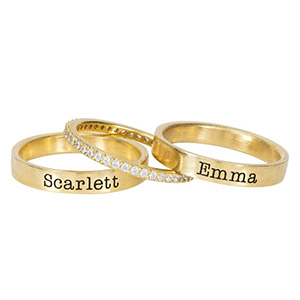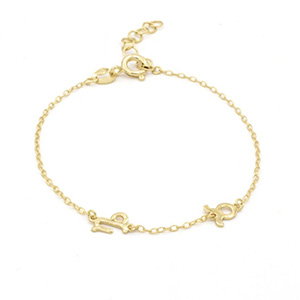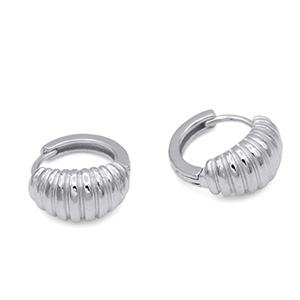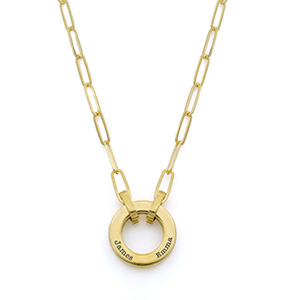Does Gold Tarnish? Causes, Prevention, and Maintenance Secrets.
Gold! A precious yellow metal that has been the symbol of wealth, power, and beauty across the centuries. And yet, a question still looms large - "Does gold tarnish?" This comprehensive guide will dive deep into why and how this brilliant metal can lose its luster and how you can ensure its longevity.
Why Gold Tarnishes
Understanding Tarnishing as a Chemical Process
Tarnishing is a natural chemical reaction in many metals. When certain metals come into contact with oxygen or sulfur, they react to form a darker layer called tarnish. However, gold - one of Earth's least reactive metals due to its atomic structure - doesn't easily tarnish. The atoms in gold are arranged in a way that it remains relatively unaffected by air or moisture exposure.
Darkish is a form of corrosion usually happening on the outer-most metal layer. With gold's sturdiness against oxidation, pure gold could be exposed to oxygen for thousands of years without tarnishing
Factors Affecting the Tarnishing of Gold
In reality, pure gold does not tarnish. However, the gold we commonly see used in jewelry is often mixed with other metals to improve its strength and durability.
Pure gold is extremely malleable, thus not suitable for making jewelry. So jewelers mix it with various metals such as copper and silver to create an alloy more resistant to wear and tear. The added metals not only increase the hardness of gold but also change its color and, most importantly - make it susceptible to tarnishing
Causes of Gold Tarnishing
Environmental factors
Gold can lose its sheen due to various environmental influences. Regular exposure to high humidity levels can induce a gradual chemical reaction on the surface layer of the jewelry piece, causing it to lose its brightness over time...
Different Types of Gold and Tarnish Susceptibility
24K Pure Gold

Pure gold, also known as 24K gold, is resistant to tarnish by nature, thanks to its lack of alloy metals.
However, its malleable character makes it less ideal for everyday wear jewelry.
22K Gold

This type contains about 91.67% gold; the rest consists of other metals, such as silver or copper, increasing its tarnish ability slightly.
The choice between 22k and other gold alloys ultimately depends on your personal preferences, cultural traditions, and the intended use of the jewelry
18K Gold

Being 75% gold, the remaining 25% includes metals like copper or silver, making 18K gold more susceptible to tarnishing than its 22K counterpart.
Its combination of purity, beauty, and durability makes it a popular choice for many jewelry enthusiasts.
14K Gold

With only 58.3% gold, 14K includes a higher percentage of other metals and thus is more likely to tarnish.
However, 14K gold is generally recognized for its balance between purity and durability.
10K Gold

As the lowest karat gold at 41.7%, 10K gold holds the highest potential for tarnishing due to the high percentage of alloy metals.
If you are looking for an affordable and fashionable option with a unique color, 10k rose gold can be a suitable choice.
Yellow Gold

Tarnishing in yellow gold, a blend of pure gold, silver, and copper, is minimal but would increase based on the karat weight.
It strikes a good balance between gold purity and durability.
White Gold

Gold is mixed with palladium, nickel, or zinc, often plated with rhodium for a brilliant white shine.
Tarnishing can occur when the plating starts to wear off.
Rose Gold

Composed of gold and a higher ratio of copper, rose gold can darken over time due to copper's reaction with oxygen.
This unique color can make jewelry pieces stand out and is often associated with romance and femininity.
Gold-plated

With just a thin layer of gold over a base metal, gold-plated items can tarnish when the base metal is exposed to harsh elements.
The durability of gold-plated items depends on factors such as the thickness of the gold layer, the quality of the plating process, and the care taken by the owner.
Gold-filled

Gold-filled items fare better than gold plated because the gold layer is much thicker. However, they can still tarnish when the gold layer wears off, exposing the base metal beneath.Gold-filled items can maintain their appearance and quality for many years with proper care, making them a practical choice for individuals looking for attractive, durable, and cost-effective gold jewelry.
Gold Vermeil

This is silver plated with gold. It can tarnish because silver and gold are extremely pure and soft, making them susceptible to scratches and dents.
18k gold vermeil jewelry should have a relatively thick gold layer, which contributes to its longevity and value.
Summary of tarnishing differences between each gold type
Each type's tarnishing potential is primarily based on the concentration of gold relative to other metals in the alloy.
Chemical Exposure
Chemicals present in dairy products can tamper with gold's luster over time. Unfortunately, substances that come into contact with us frequently, like cosmetics, perfumes, lotions, and even cleaning products, contain chemicals that could adversely affect the surface of gold jewelry.
Interestingly, chlorinated water in swimming pools or hot tubs can also react with the gold surface, leading to possible discoloration. Certain medications can cause bodily changes whose effects may extend as far as increasing the acid levels in our sweat. These amplified acid levels can react with the surface of our gold jewelry worn daily.
Physical Factors
The loss of gold's luster is sometimes due to chemical reactions. Sometimes, physical factors come into play. Frequent abrasion from daily activities can wear away the metal surface of gold jewelry over time. In particular, when other metals or gemstones scratch it or when it's frequently rubbed against skin or fabrics.
Surprisingly, the natural oils and sweat from our skin can also affect the integrity of gold surfaces. Improper care and storage too contribute to gold's tarnish. Leaving your jewelry out in the open, susceptible to dust and moisture, will hasten its tarnishing process.
Despite all these tarnishing factors, remember - your golden treasure isn't doomed to fade! With some preventative measures and regular maintenance, you can ensure its longevity.

Prevention Tips for Gold Tarnishing
While certain factors causing gold tarnish are unavoidable, many others are manageable.
Proper Storage of Gold Jewelry
Proper storage of your gold pieces is crucial in keeping them tarnish-free for longer. When not worn, they should ideally be kept in a cool, dry place, away from direct sunlight. Using soft cloth pouches or lined jewelry boxes to store each piece separately can help prevent scratching and reduce exposure to dampness and pollutants in the air.
Avoiding Exposure to Harsh Chemicals
As discussed earlier, everyday substances such as perfumes, lotions, cosmetics, and even cleaning agents contain chemicals that may interact negatively with your gold jewelry. So, avoid wearing your gold pieces when performing tasks involving such products.
Maintaining Regular Cleaning Routines
Even with proper storage and preventative measures, your gold jewelry needs regular cleaning. This doesn't require fancy tools or solutions - mild dish soap and warm water will suffice for most items. Soak your gold jewelry in the solution, then gently scrub it using a soft toothbrush. Finish by drying and lightly buffing it with a soft, lint-free cloth.
How to Clean Gold Tarnish
When you notice a slight dulling of your gold's shine despite all precautions, it's time for some cleaning action. Different cleaning techniques might be recommended depending on the type of gold you're dealing with.
Simple Cleaning Techniques for Different Gold Types
Many types of gold jewelry can safely be cleaned using warm water and mild dish soap. Heavily tarnished pieces might need more attention, but avoid using abrasive cleaners or scrubbing tools that could scratch the gold surface.
Polishing and Buffing Tips
After a thorough cleansing, a gentle buffing session can work wonders for your jewelry's shine. Smooth the surface with a specialty gold-polishing cloth—gently rub each piece using back-and-forth motions. Avoid circular ones, as they can magnify any existing scratches.
Professional Cleaning Options
If your gold pieces contain gemstones or intricate designs, professional cleanings are the safest option. Jewelers have special equipment to help deep clean without damaging your precious gems. Also, heavily tarnished pieces might need professional attention.
Never underestimate the value of regular maintenance; it can save you time and money and keep your pieces in their best condition.
Conclusion
It's essential to understand that while pure gold doesn't tarnish, the alloys mixed with gold in your jewelry may cause tarnishing over time. Environmental, chemical exposure and daily wear can impact how quickly your favorite gold item may tarnish.
However, understanding why gold tarnishes is just half the battle. Implementing measures like proper storage, avoiding harsh chemicals, and maintaining regular cleaning routines can help you effectively combat this.
Finally, if you own a piece that has already tarnished significantly, cleaning it appropriately or seeking professional help could restore its lost luster.
Remember that care is essential to owning jewelry – especially regarding gold. With proper knowledge and execution of preventive and maintenance steps, you can ensure the longevity of your precious golden treasures. Their gorgeous sheen would last beautifully through generations!

